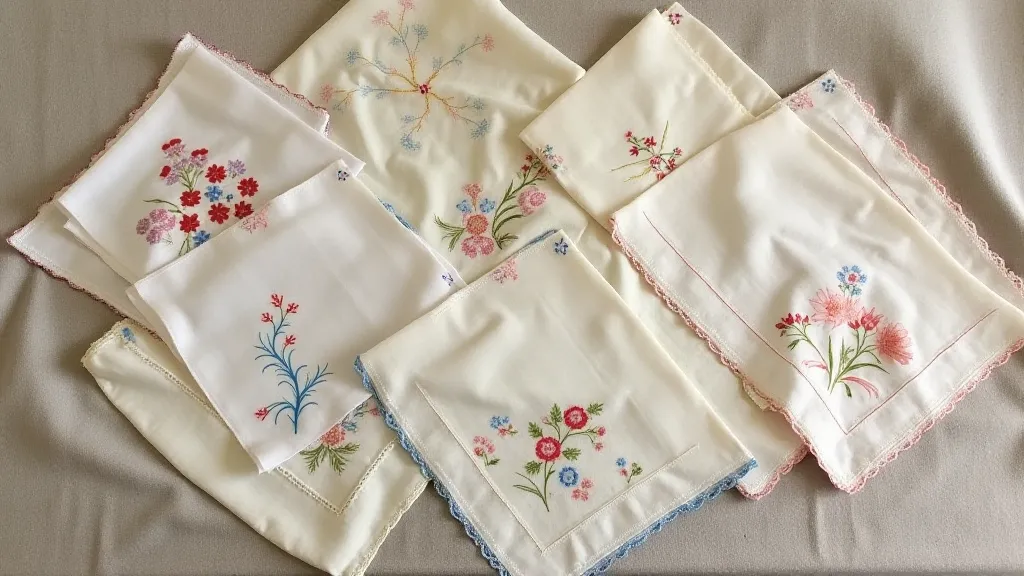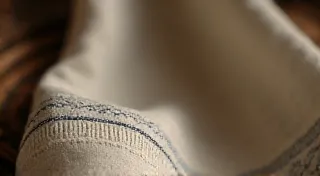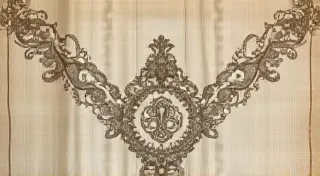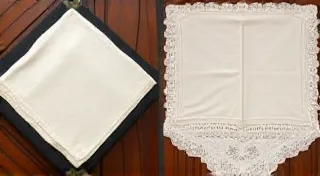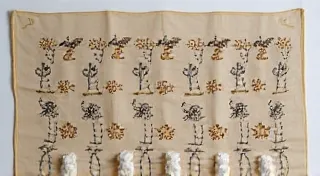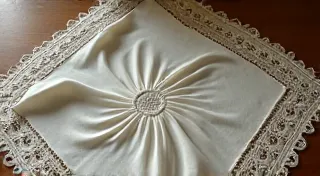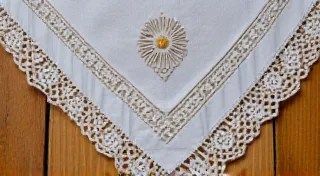The Symbolism of Flowers on Antique Handkerchiefs
Antique handkerchiefs, particularly those from the Victorian era, are more than just delicate pieces of linen or cotton. They offer a fascinating glimpse into the language of flowers, a complex system of non-verbal communication popular during the 19th century. Understanding this ‘floriography’ can significantly deepen your appreciation for these collectible linens and provide insight into the sentiments they were intended to convey.
The Victorian Language of Flowers
In an era when overt displays of emotion were often discouraged, the language of flowers – or floriography – offered a discreet way to express feelings of love, longing, friendship, and even grief. Each flower held a specific meaning, and the combination of flowers used, their colors, and their arrangement all contributed to the overall message. The materials used in constructing these delicate pieces also played a role; the feel of soft linen or the sheen of silk contributed to the overall impression. If you're interested in learning more about the different fabrics used in antique handkerchiefs, you might find our article on Understanding Antique Handkerchief Fabrics: Linen vs. Cotton vs. Silk informative.
Common Floral Motifs & Their Meanings
Let’s explore some of the most frequently seen floral motifs on antique handkerchiefs and their associated symbolism:
Roses: Love and Beauty
Roses, perhaps the most recognizable floral symbol, held a wide range of meanings depending on their color. Red roses signified passionate love and deep affection. Pink roses represented gratitude and grace. White roses traditionally symbolized innocence and purity – often used for weddings or to express respect. Yellow roses, however, could carry a more ambiguous meaning, sometimes representing jealousy or infidelity, so their use needed careful consideration. Antique handkerchiefs adorned with roses are often tokens of romantic sentiment.
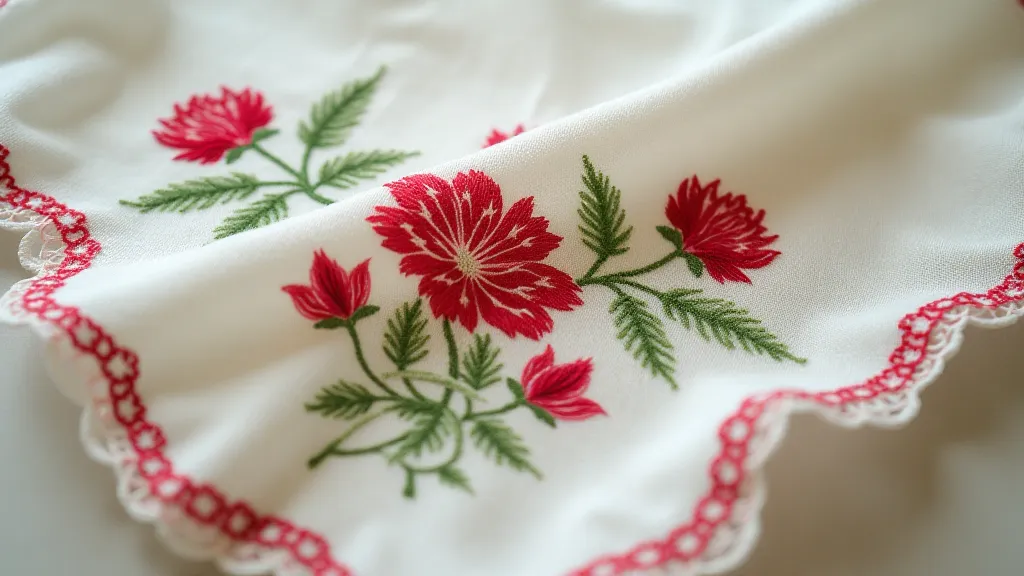
Lilies: Purity and Remembrance
Lilies, particularly white lilies, were associated with purity, innocence, and virtue. They were also frequently used to represent remembrance and sympathy. A handkerchief featuring lilies might be given to express condolences or to signify a desire for peace and tranquility. Different varieties of lilies had slightly different nuances in meaning, which adds another layer of complexity. The specific way a lily was embroidered, along with the fabric it was embroidered onto, contributed to the overall message conveyed.
Violets: Faithfulness and Modesty
Violets, with their gentle fragrance and demure appearance, symbolized faithfulness, modesty, and love at first sight. They were often given as a token of enduring affection and were a popular choice for expressing platonic friendships as well as romantic interest. The delicate embroidery of violets on antique handkerchiefs conveys a sense of quiet charm and sincerity. Beyond the visual appeal, regional embroidery styles often influenced the appearance of these delicate floral depictions – a topic we explore further in our article about Regional Variations in Antique Handkerchief Embroidery. The intricate stitching and nuanced color palettes used often reflected the local artistic traditions and the available resources.
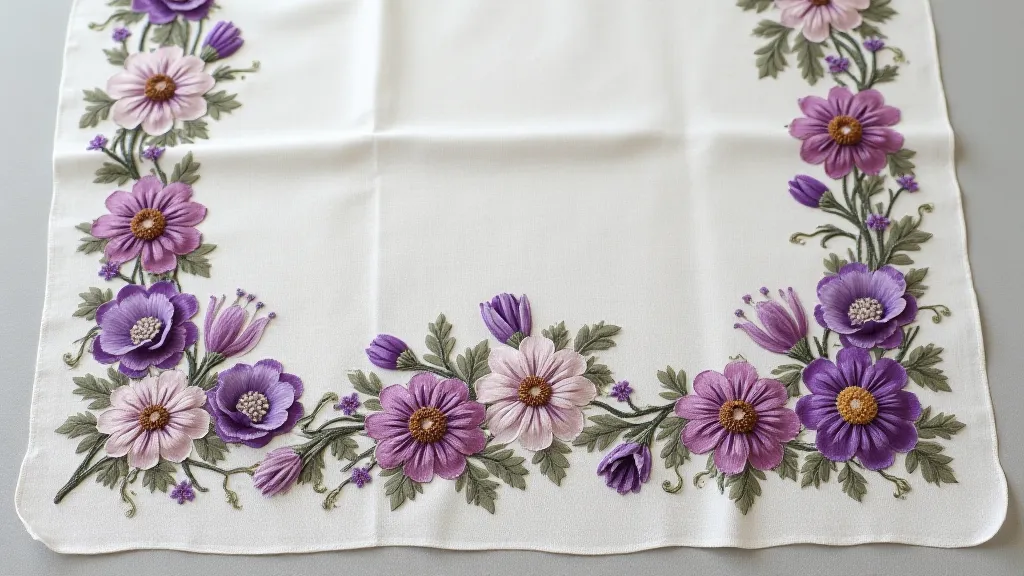
Other Notable Flowers
Beyond roses, lilies, and violets, other flowers commonly found on antique handkerchiefs included:
- Forget-me-nots: True love and remembrance
- Carnations: Fascination and distinction (different colors held slightly different meanings)
- Sweet Peas: Departure, thankfulness, or delicate pleasures
- Chrysanthemums: Honesty and truth
Deciphering the Message
When examining an antique handkerchief, consider the flowers depicted and their arrangement. Was it a single flower, a bouquet, or a scattered arrangement? The color of the flowers is also important. Beyond the visual interpretation of the flowers themselves, the etiquette surrounding the giving and receiving of handkerchiefs was quite complex. For a deeper understanding of the social customs involved, you might find our article on The Role of Handkerchiefs in Victorian Etiquette and Social Customs helpful. Did the giver present it with a specific bow? Was it offered with a certain degree of formality? These nuances added another layer of meaning to the message conveyed. Understanding these social cues was as vital as knowing the floral language itself; a misplaced gesture could entirely alter the intended meaning.
The Influence of Fabric Quality
The quality of the handkerchief’s fabric was also a significant factor in its perceived value and the message it conveyed. Higher quality fabrics, like fine linen or silk, were often reserved for more significant gifts and were often meticulously embroidered with intricate floral designs. The thread count of the fabric, along with the quality of the embroidery thread, contributed to the overall impression of luxury and refinement. To truly appreciate the craftsmanship involved, understanding the specific techniques and materials used is essential. Our guide to Understanding Thread Counts and Fabric Quality in Antique Handkerchiefs provides a detailed breakdown of these factors, allowing you to discern the subtle differences between a hastily made keepsake and a truly exceptional piece of artistry.
Beyond the Blooms: Context and History
It's important to remember that the language of flowers wasn’t static. Meanings could evolve over time and vary by region and social class. A handkerchief embroidered with yellow roses in one context might signify infidelity, while in another, it could simply represent friendship. The historical period in which the handkerchief was created also plays a crucial role in its interpretation. Factors such as political events, social trends, and artistic movements influenced the popularity of certain flowers and their associated meanings. Consider the geopolitical climate, the prevailing artistic styles, and even the individual history of the recipient. Sometimes, a seemingly simple embroidered flower can unlock a fascinating narrative about a bygone era.
The Art of Regional Variations
The Victorian language of flowers wasn't universally applied with rigid consistency. Regional variations were incredibly common, with specific areas developing their own interpretations and nuances. For example, a violet might symbolize something slightly different in England versus France or the American colonies. These subtle shifts are a testament to the enduring power of local customs and artistic traditions. Studying these regional differences can reveal a more complete and nuanced understanding of the language of flowers and the social context surrounding it. The styles of embroidery itself also differed; the techniques used in a rural community might be significantly different from those practiced in a bustling urban center. Exploring these diverse influences is key to truly appreciating the richness and complexity of antique handkerchiefs.
The Threads of Social Status
The choice of flowers, fabrics, and embroidery techniques often reflected the social standing of both the giver and the recipient. More affluent families might favor luxurious silks and intricate, time-consuming designs, while those of more modest means might opt for simpler linens and less elaborate embroidery. The quality of the materials used wasn't merely a matter of aesthetics; it was a subtle but powerful form of communication, conveying messages of wealth, status, and social connections. A handkerchief made of the finest French silk, for example, would have immediately signaled a high level of sophistication and privilege.
Preserving the Story
Antique handkerchiefs with floral embroidery are fragile and precious artifacts of the past. Careful handling, proper storage, and a little research into their symbolism can help preserve these tangible pieces of history for generations to come. Understanding the language of flowers allows us to connect with the people who created and cherished these delicate treasures. The delicate nature of these artifacts means that understanding the construction of the fabric itself, and how best to preserve it, is crucial to their long-term survival. This includes researching appropriate cleaning methods and storage techniques to prevent deterioration and ensure these beautiful objects endure.
